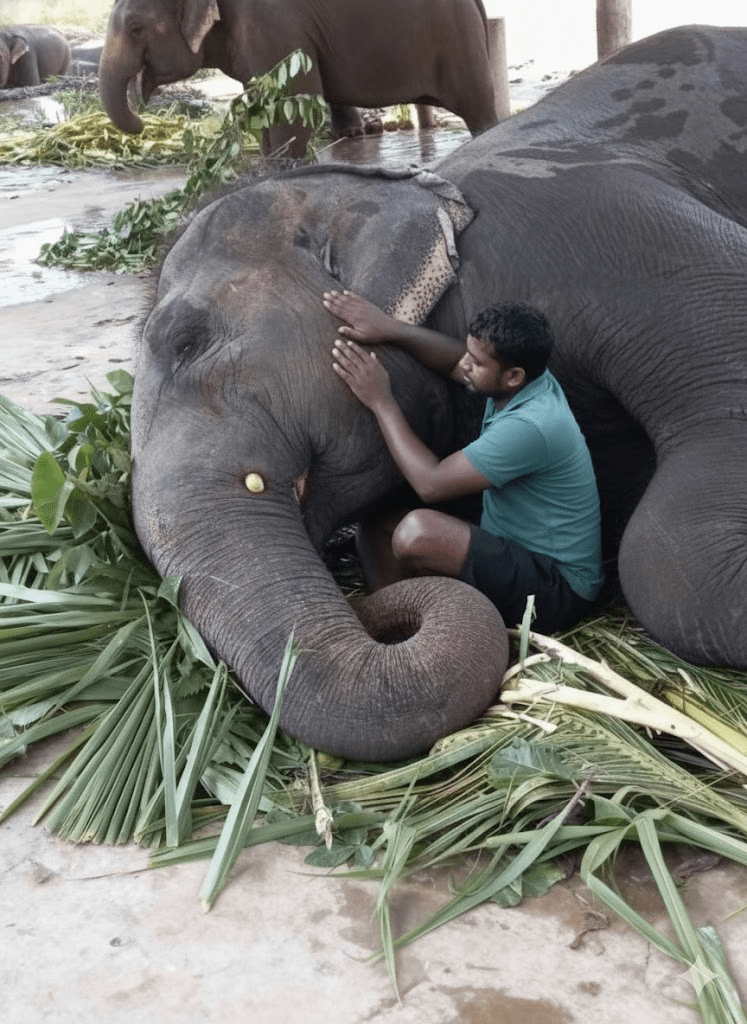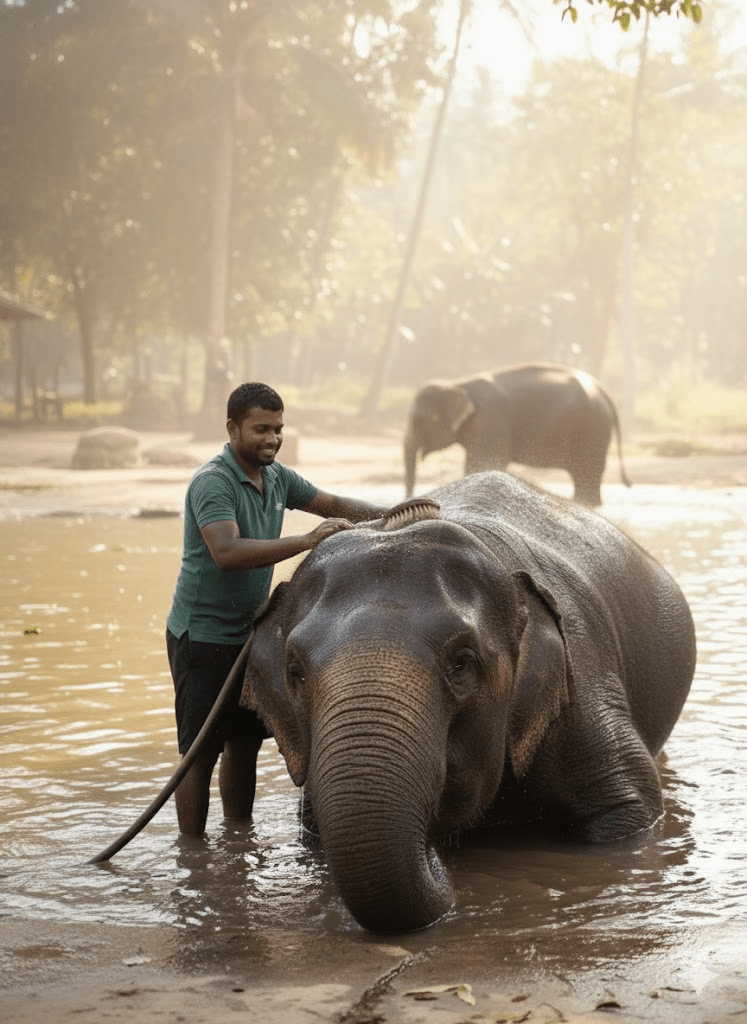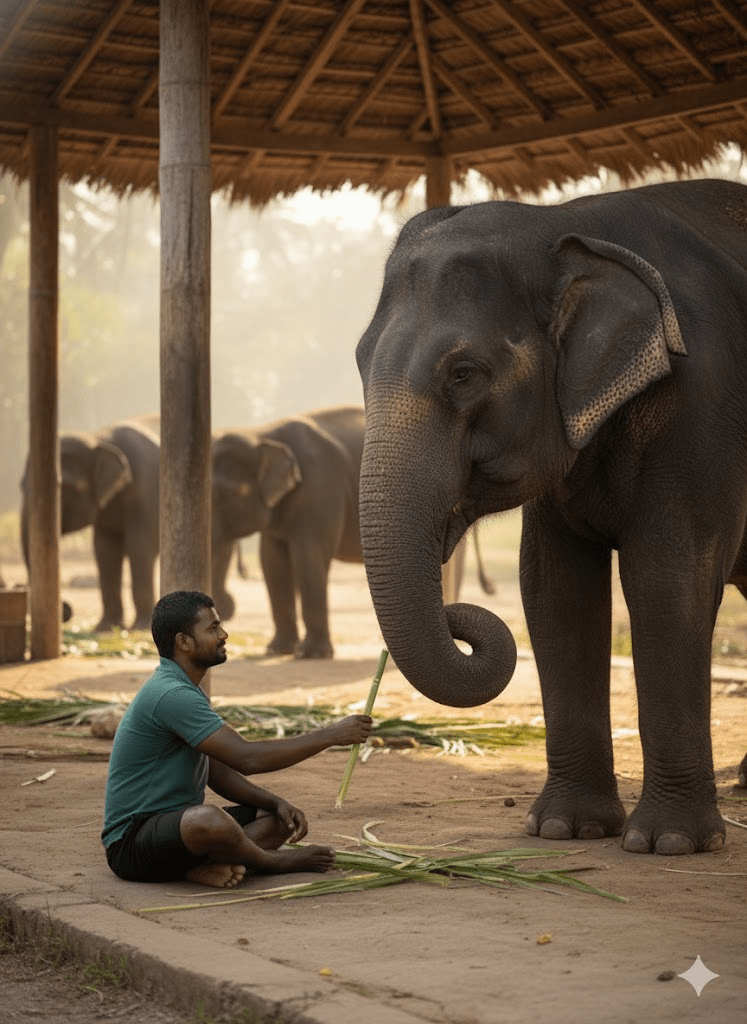In a world often characterized by bustling human activity and the encroaching separation of species, moments of profound interspecies connection stand out as testaments to an enduring, almost ancient, form of trust. The image before us captures one such extraordinary instant: a man, seemingly at peace, nestled against the colossal head of an elephant, surrounded by a bed of lush foliage. This isn’t merely a snapshot; it’s a visual narrative of a relationship forged in understanding, care, and mutual respect. The gentle curve of the elephant’s trunk cradling the man, the shared tranquility in their posture, and the palpable sense of safety suggest a bond far deeper than that between a handler and an animal. It speaks to the essence of a sanctuary, a place where these magnificent creatures, often scarred by past traumas or the relentless pressures of the wild, find not just refuge but also companionship. This serene scene invites us to look beyond the surface, to delve into the intricate dance of human and animal welfare, and to appreciate the delicate balance required to foster such profound connections in a world where wild spaces are shrinking and ethical conservation is more crucial than ever. It prompts us to ponder the emotional intelligence of elephants, their capacity for forming intricate social bonds, and the unique role humans can play in their lives when approached with empathy and genuine devotion.

Sanctuaries play a pivotal role in this intricate ecosystem of human-elephant interaction. Unlike circuses or purely commercial ventures, a true sanctuary prioritizes the well-being, rehabilitation, and natural behavioral patterns of its residents. For elephants rescued from arduous logging camps, abusive tourist rides, or orphaned due to habitat loss, a sanctuary offers a second chance at a life of dignity. The man in the photograph is likely a mahout or a dedicated caregiver, whose life revolves around understanding and catering to the complex needs of these intelligent giants. His presence, so close and vulnerable, indicates years of careful interaction, a slow and deliberate building of trust that cannot be rushed or forced. This type of deep connection is not merely functional; it is emotional, reflecting the profound capacity of both species to connect on a level beyond simple command and obedience. It highlights the ethical imperative of providing elephants with environments where they can express their natural behaviors and find solace.

The care provided within such a sanctuary extends far beyond basic sustenance. It encompasses veterinary attention, a rich and varied diet of natural forage, and ample space for roaming, bathing, and socializing with other elephants. More subtly, it includes the consistent, gentle presence of caregivers who understand elephant communication – their rumblings, body language, and subtle cues. Elephants, known for their sophisticated social structures and deep emotional lives, thrive on routine and stability, which experienced mahouts provide. They are highly intelligent animals, capable of experiencing a wide range of emotions including joy, grief, and empathy. The careful tending to these emotional needs is what truly differentiates a sanctuary from a mere holding facility. The man’s comfortable posture, almost as if he were lying next to a cherished friend, speaks volumes about the emotional reciprocity that can develop in such settings. It is a testament to the belief that elephants are not merely animals to be managed, but individuals to be respected.

Ethical tourism, too, plays a crucial role in sustaining these sanctuaries. When visitors choose to support establishments that prioritize elephant welfare – where riding is discouraged or completely absent, and interaction focuses on observation, feeding, and respectful engagement – they contribute directly to the financial viability of these crucial conservation efforts. This contrasts sharply with exploitative practices where elephants are forced into unnatural performances or subjected to grueling work. The image encourages us to reflect on our own choices as consumers and travelers, urging us to seek out experiences that align with compassionate and sustainable practices. The peaceful scene depicted is not just aesthetically pleasing; it is a powerful symbol of what is possible when human interaction with wildlife is guided by ethical principles and a genuine desire for coexistence.







